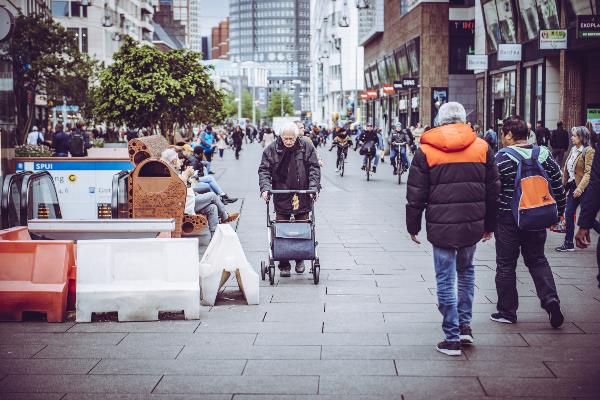Centre of Expertise Health Innovation Game helps in inclusive design of spaces and environments
How do you design healthy, smart and age-friendly buildings and environments where everyone can move around easily and freely?
Centre of Expertise Governance of Urban Transitions

How do you design healthy, smart and age-friendly buildings and environments where everyone can move around easily and freely? People with disabilities are often overlooked when neighbourhoods, buildings and public spaces are designed. This is a risk of social exclusion. In order to provide policy makers, city planners and civil engineers with more knowledge about users with disabilities, an online game is being developed by the 'Educational Game: Building Inclusive Environments for All Generations’ project, in short: BIG Game. The Urban Ageing research group is collaborating in this.
The 'BIG educational game' project is a European Erasmus+ project that focuses on the social inclusion of people. The parties working together in this project want to raise awareness for (the design of) the living environment by developing an educational online game. In this BIG game, the player can solve problems of virtual characters, such as someone in a wheelchair entering an inaccessible house, a parent loading groceries into a cart with a child or a visually impaired person visiting a restaurant. A workshop methodology is also being developed so that several players can play the game together.
Risk
Difficult to access environments and spaces, such as some neighbourhoods, public spaces or buildings, are a major risk of social exclusion. In particular, people with physical, cognitive or social disabilities are often overlooked in their design. People in special circumstances, such as pregnancy or with a child in a buggy, also experience problems. Smart, healthy and age-friendly built environments adapted to these target groups ensure inclusion and good participation in society. These are environments that are safe and comfortable, where users can move around well, and which provide the right services and opportunities, for example support with care or activities of daily living.
Awareness
The BIG game aims to increase awareness of (the design of) the living environment. By playing the game, players gain knowledge about suitable ways to create healthy, smart and age-friendly built environments. Many professionals often only highlight one side of designing the living environment. However, to achieve smart, healthy age-friendly environments, a well-rounded approach is needed that combines architecture, user knowledge and ICT. The BIG game therefore provides learning material based on this approach.
Target groups
The BIG game is intended for various target groups.
-
Professionals in municipalities and health or welfare institutions involved in urban development and social inclusion.
-
Volunteers in the welfare field or initiatives and councils for older adults who stand up for the interests of people who need healthy and age-friendly environments.
-
Private individuals, such as students, carers or those in need of suitable environments or other interested parties.
Approach
The BIG game builds on the current Erasmus+ project Hands-on SHAFE (Smart Healthy Age-Friendly Environments). The results of Hands-on SHAFE are transformed into a learning game for a larger audience in the BIG game. Future players and (representatives of) people who live and work in non-inclusive living environments are involved in the project. People with first-hand experience are invited to contribute to the content of the game through interviews or small-scale meetings. Feedback on the content is then sought from policy makers, civil engineers, city planners and other volunteers.
More information
BIG-game (Dutch)